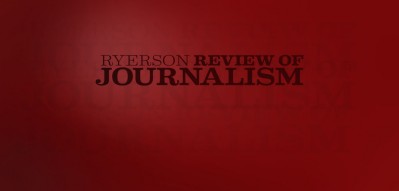A basic principle of journalism is that the duty of the news media is to create an informed electorate. That’s one of the first things taught to fresh young students when they enter journalism school. Sadly, that principle is becoming more and more endangered as journalists allow their priorities to be twisted to suit commercial demands. News and comment are turning into just another product to be effectively marketed to select consumers who, in turn, can be sold to advertisers. Journalism’s essential priorities are being skewed by even the most reputable organizations: last year, Max Frankel, executive editor of the revered New York Times, stated that he had no objection to the paper’s news department treating its information as a product to be marketed.
Now Canada’s national newspaper seems to have fallen into the trap. When Norman Webster and Geoffrey Stevens were fired from their positions as editor-in-chief and managing editor of The Globe and Mail at the beginning of this year, many believed it was to improve the marketability of the paper, not its quality. They were replaced by capable journalists who have the ability to target the Globe much more toward the business community, a move that publisher Roy Megarry is known to favor. William Thorsell, a former editorial and business writer, is the new editor-in-chief, and Timothy Pritchard, previously the editor of the Report on Business section, is now managing editor.
Shortly after his appointment, Thorsell was forced to call a meeting in the newsroom to reassure the paper’s editorial staff that their jobs would be safe, and that their roles as journalists would not be changing. Megarry had personally assured Stevens that his job was secure, but soon afterward Stevens was reassigned to a position as senior writer. “This is an appalling, shabby and stupid way to treat the best managing editor in the country,” said Webster. “This firing is only the second shoe,” declared Stevens, “and Roy Megarry has as many in his closet as Brian Mulroney.” Sure enough, within a few weeks, Shirley Sharzer, the deputy managing editor, had most of her responsibilities taken away and she has since left the paper.
At the time of writing, several columnists who don’t seem to fit in with the paper’s changing direction are expecting to leave, allowing the Globe to move away from its emphasis on Canadian politics and culture to being more the voice of big business. The changes reflect Megarry’s expectation that his new masthead will push its product toward the lucrative business market. In so doing, though, it will become the voice of a narrow segment of society.
Our concern here is not with making a profit -for there is nothing wrong with earning money-but with the integrity and independence that are lost when marketing takes priority over the distribution of information. In this year’s Ryerson Review of Journalism, several articles examine this disturbing Canadian trend. We look at how The Toronto Star and The Toronto Sun favor advertisers inlheir homes sections, and we consider the conflicts of interest that are created when journalists accept awards provided by corporate sponsors. We also explain how The London Free Press adopted a new, USA Today-style image in an attempt to appeal to a larger, more television-oriented market.
Fortunately,lhere are exceptions in the Canadian media to commercial exploitation, and we include some of their stories too. While we criticize the CBC for its adherence to a timid policy that tends to emasculate its journalists, we also offer a look at Peter Raymont, a filmmaker unafraid to produce point-of-view documentaries that the CBC is reluctant to air. We profile John Fraser, Saturday Night’s bold and audacious new editor, who loves stirring up controversy to inspire readers to talk about his struggling magazine. And we visit Bob Verdun’s tiny newspaper in Elmira, Ontario, the aptly-named Independent, where Verdun still practises the old straight-from-the-hip, damn-the-advertising journalism that’s made him his share of friends and enemies.
This year it was quite a challenge for the Review to live up to the reputation of its past issues, especially after the Association for Education in Journalism and Mass Communication last spring named the 1987 Review the best student magazine published by a North American journalism school. Ironically, the award helped us to attract more advertising (and more money) than ever before, which enabled us to produce a considerably fatter magazine without the budget constraints of the past-but without compromising any of our editorial content.
That’s how it should be. Editorial content generates advertising-not the other, way around. We’ve got to keep our priorities straight.
About the author
Mark Richardson was the Editor for the Spring 1989 issue of the Ryerson Review of Journalism.

